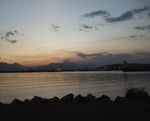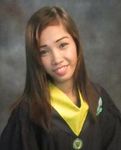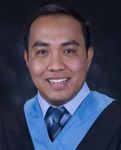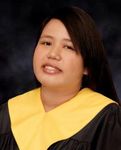Tour Pinoy Recognition - International Journal of Signal Processing Systems Vol. 2, No. 1 June 2014
←
→
Page content transcription
If your browser does not render page correctly, please read the page content below
International Journal of Signal Processing Systems Vol. 2, No. 1 June 2014
Tour Pinoy Recognition
C. C. Robas, J. M. A. Adoremos, K. S. Morales, J. C. Unida, and R. S. Macatangga
College of Computer Studies, Our Lady of Fatima University, Philippines
Email: {clarencerobas, unidajoanna}@gmail.com, {jmadoremos, rsmacatangga}@live.fatima.edu.ph,
moraleskimberly024@yahoo.com
Abstract—Tourism business faces many challenges brought presents not only the beauty of the tourist destinations
by modern technology (i.e. Internet). As online reservation and its culture but also the reasons why it’s really more
and booking are growing into a more convenient tool for fun to visit the wonderful tropical place called Philippines.
tourists, we consider developing an image recognition They also used some promotional tools such as leaflets
application which helps in promoting the local tourism in
and billboards, commercial T.V. ads and even internet by
the Philippines. While several of these image recognition
applications are being implemented, our system introduces means of advertisements featuring famous tourist spots in
another way of delivering tourism facts focusing on the the Philippines like: visitmyphilippines.com,
selected tourist destinations by just uploading a photo. The itsmorefuninthephilippines.com and tourism.com.gov.ph.
system responds useful information needed by the tourists. These websites and commercials about the tourist
The Tour Pinoy covers the top five (5) tourist destinations in destinations in the Philippines are being featured together
the Philippines provided by the Haranah Tours Corporation, with its pictures. All of the methods used by the
a duly licensed tourist transport operator accredited by the department of tourism have only one goal: to showcase
Department of Tourism Philippines. Based on the criteria the magnificence and distinctness beauty of the
used by the proponents and the implementations suggested,
Philippines.
the proponents found out that Tour Pinoy helps in
promoting local tourism in the Philippines.
With the promise of the continual growth of
technology and the advancements in the field of artificial
Index Terms—tourism promotion, artificial intelligence, intelligence and computer vision, we prompted the use of
computer vision, image recognition which to promote tourism, particularly image recognition
where it’s a branch of computer vision that deals with the
science and technology of machines that see and extract
I. INTRODUCTION information by mimicking the human’s sense of sight.
Ref. [3] Seemann also defines Digital image processing
Tourism affects different aspects of a community
that concerned primarily with extracting useful
including businesses, government services, natural
information from images. Ideally, this is done by
environment, cultural amenities and residents. Ref. [1]
computers, with little or no human intervention.
Murillo also stated in her article entitled: Promoting the
According to a well-known online encyclopaedia,
Philippines, that the Philippines is a home with lots of
Computer vision has many applications, from medicine
cultures and traditions that catches international interest.
field where it is being used to extracts info’s for further
She also describes the country as a perfect example of a
medical diagnosis of the patient, in industry where it is
“mixed economy” with its tourist spots as a top potential.
used for manufacturing process to robotics where it is
Aside from having a good interpersonal relations with the
being used to guide the driver or pilot in some situations
foreign visitors, this country has much to offer beyond
that is being encountered by the robot. Even in mobile
you expect, from all year-round festivals to rich culture to
applications, image recognition is widely used because of
natural wonders. But then, if we cannot uphold the
its new way of delivering information to the users. Ref. [4]
Philippines genuinely, the distinct beauty of the country
One of the best examples of this is the Google Goggles. It
will not equalize the assurance of an upward movement
was developed by Google and was launched last October
in the economy. That is why the government does its best
2010. Ref. [5] Google Goggles can determine various
to uplift the tourism industry in the Philippines. Ref. [2]
landmarks and labels and provide brief information to the
Because of this, the Department of Tourism Philippines
users. Ref. [6] Because of its impressive functionality, the
was established to promote the country as a major travel
Metropolitan Museum of Art announced that they have
destination. In 2002, the “Visit Philippines 2003”, one of
been collaborating with Google Goggles to provide
the most successful tourism promotion project was
information the artworks found in their museum through
initiated by the department of tourism as a campaign
their website direct links.
advertisement. Since then, the Department of Tourism
Back to tourism promotion, though the tourism
never stops in planning and implementing projects to
promotion methods used nowadays are helpful, still we
promote tourism in the country. Their latest project is the
know that the technology is fast pacing. Because of this,
“It’s more fun in the Philippines” campaign where it
the tourists become tech savvy in a sense that they want
something which can provide information in a new way,
Manuscript received December 30, 2013; revised May 6, 2014. this may be helpful in making the local tourism more
©2014 Engineering and Technology Publishing 42
doi: 10.12720/ijsps.2.1.42-47International Journal of Signal Processing Systems Vol. 2, No. 1 June 2014
interesting. Ref. [7] It was proved and further revealed by speed. Next, in the keypoint localization step, the
Molina et al. that the new technologies impact the algorithm discards the low contrast points and eliminates
growing number of the tourist destination and its the edge response. Ref. [9] After that, it computes the
competitors among the different destinations and the principal curvatures using the Hessian matrix and
alteration of the tourist consumer behaviour gives a great discards the keypoints that have ration between the
transformation to the information sources for tourism principal curvatures greater than the ratio. Then, in order
activities over the past fifteen years. Ref. [8] It was also to get an orientation assignment, an orientation histogram
explained by Goeldner et al. that one of the most was made from the gradient orientations of sample points
successful in using the modern technology (i.e. Internet) within a region around the keypoint.
to advertise its products is the travel industry. Aside from
surpassing the other sectors in marketing their product
electronically, we can see that both large and small
businesses ability to communicate with the consumer
with their promotional messages has already improved.
In relation with this, we, the proponents developed an
application software called: “Tour Pinoy Recognition”,
an image recognition-based and tourist spot identifier
application software which can help better enhance the
quality of promoting the tourism industry in the
Philippines by providing relevant information to the
tourist by just uploading a sample picture of the place. In
this paper, it explains what is the algorithm used in this
software, how the program works, the criteria being used
to test the functionality of the software and it’s results,
the language and environment of the software and the
scope and it’s limitation.
II. MATERIALS AND METHODS
In this part, we will discuss the methods and materials
used in this program by dividing it into four parts: the
algorithm, the system procedure, the criteria and the
language and environment used for the software
development.
A. Algorithm
Before we develop the system of course, we need to Figure 1. SIFT Algorithm
specify how system should work. Since one of our
primary goals is to find an algorithm that extract
information faster, we have found out that among the
image processing algorithms presented in computer
vision technology, SIFT and SURF, SURF is the
common algorithm used hence we have decided to picked
the SURF algorithm by Herbert Bay et al. for the image
processing part of our system because of its speed in
recognizing images comparing to SIFT algorithm by
David Lowe. To further understand why we choose
SURF as the image processing algorithm for Tour Pinoy
Recognition and to explain how the two algorithm works,
here’s is a flowchart which describes the workflow of the
SURF algorithm that based on Chris Evan’s Notes on the
Open SURF Library and SIFT algorithm based on the
Paper entitled: A comparison of SIFT, PCA SIFT and
SURF by Juan et al.:
The SIFT algorithm (see Fig. 1) consists of four major
stages, namely: the Scale-space extrema detection,
keypoint localization, orientation assignment and finally
the keypoint descriptor. Ref. [9] First, the algorithm Figure 2. SURF Algorithm
identifies the potential interest points using the
difference-of-Gaussian or DOG. SIFT used the DOG SURF algorithm (see Fig. 2), on the other hand, has 3
function over the Gaussian to improve the computation main parts namely: Integral Images, Fast-Hessian
©2014 Engineering and Technology Publishing 43International Journal of Signal Processing Systems Vol. 2, No. 1 June 2014
Detector and Interest Point Descriptor. Ref. [10] First, the Train Set Data Generation
integral image representation is created from uploaded Clear temporary data
image and then, the algorithm computes the pixel sums For each train image
over upright regular areas. Next, the algorithm builds the If interest point data exists, store data then
determinant of Hessian response map. After which, it continue loop
performs a non-maximal suppression to localize interest Define train image as parameter
points in a scale-space. Points are detected by the Convert image to interest point data
Store data
Interpolation to sub-pixel accuracy. In SURF Descriptor
stage, Haar wavelet and dominant orientation of an Matching Data Generation
interest point are computed then extracts 64-dimentional Set matching parameter as null
descriptor-based on the sums of wavelet responses. Lastly, For each train set data
Interest Point part, it generates Accessor or Mutator Execute OpenSURF
methods for data. Append computed result to temporary file
Though SIFT and SURF algorithm are widely used for Grayscale Conversion (By Brandon Cannaday)
image processing, SURF works slightly different over the
Create a new blank image
SIFT algorithm Ref. [11] where the SIFT algorithm
Define converting color matrix
builds an image pyramid, filtering each layer with Instantiate a blank image attribute
Gaussians of increasing sigma values and taking the Set the color matrix to the image attribute
difference. In SURF algorithm, on the other hand, creates Reference the image attribute to the supplied image
a “stack” without the two is to one (2:1) down sampling Save result as the blank image
for higher levels in the pyramid resulting in images of the
Image Resize (By Charlie Key)
same resolution. In addition, we also choose the SURF
algorithm since it is more optimized than the SIFT Calculate image dimension versus desired dimension
because it uses box filters. Ref. [9] SURF is also useful as ratio
Set Max (calculated width, calculated height) as percent
a fast tracking algorithm which is very essential in
variable
processing and extracting information for the tourist. Define new dimension as image dimension * percent
B. System Procedure variable
Instantiate new bitmap with new dimension as parameter
In this part, it explains how the program works Save bitmap as image
including the input, its process and the final output of the
software. Image to SURF Data Conversion
The program pseudocode: Below, is the program Load Image
pseudo code which elaborates the important parts of the Generate interest points (IPts) using OpenSURF
software. It is divided into eight (8) distinct yet Save IPts
interconnected parts: Test Image vs Train Set Matching
Main Algorithm Load test image
Generate train set data Generate interest points (IPts) using OpenSURF
Generate test image match versus train set data Count IPts
For each generated match data in temporary file Open temporary file (TF) as blank
Insert to temporary repository (TR) [train image For each train set data
id, matches, difference] Start clock
Insert to temporary statistics (TS) [train image id, Load IPts data
execution time] Generate matches
For each data in TR Difference = IPTs count - loaded IPts size (count)
If matchInternational Journal of Signal Processing Systems Vol. 2, No. 1 June 2014
sample image from the database. If the image matches to
the set threshold of the artificial intelligence, the software
will display the image matched together with the relevant
tourist spot information (matched tourist destination top
view snapshot, the brief history , promotional video and
facts about the matched tourist destination). If the image
does not matched in the given treshold, it will display
“No Match Found” dialog box. The software will also
display the time elapsed from the image matching right
after the image matching and before it display the results
window to showcase the computing efficiency of the
system and assure precision to the users. Figure 5. Baguio city cathedral
Figure 6. Paoay church
Figure 7. Mayon volcano
Figure 3. Program Flowchart
C. Criteria
To test the functionality of the software, the
proponents used the following criteria: (1) number of
interest points, (2) number of matches from the top result,
(3) matching accuracy, and (4) total processing time. Ref.
[12] The proponents used 80 test images that was Figure 8. Villa escudero
gathered randomly from Google images pertaining to the
tourist spots found in the Philippines for this experiment. Five of the 80 sample images (see Fig. 4 to Fig. 8)
used for the criteria.
1) Accuracy
Table I below shows the accuracy in determining the
tourist spot by conducting an image recognition software
test based on the sample images used in the testing.
2) Time Elapsed from Sample Images
Table II shows the overall average of the total
execution time in seconds, the mean execution time by
milliseconds and its rating. The total average time elapsed
Figure 4. Candaba swamp is based on the sample images that was used.
©2014 Engineering and Technology Publishing 45International Journal of Signal Processing Systems Vol. 2, No. 1 June 2014
TABLE I. ACCURACY Based on the criteria used to test the functionality of
Matched Unmatched Correct False Accuracy the software, the proponents found out that:
Images Images Match Match (%) Number of matched images > number of
54 26 71 9 88.75 unmatched images meaning: 54 out of 80 testing
images were matched and 26 out of 80 images
TABLE II. OVERALL AVERAGE OF THE TIME ELAPSED
FROM SAMPLE IMAGES were not matched.
Number of correct match > number of false match
Total Average Total Time Average Mean Time meaning: 71 out of 80 testing images were
Items (seconds) (milliseconds)
considered as the correct match and 9 out of 80
80 20.79 424.36
testing images were false match.
D. User Requirements The average total time from the sample images
Purpose: to provide necessary information for the that were tested is 20.79 seconds.
users who wants further facts regarding the tourist spots The average mean time from the sample images
that depicts to the photos they have taken. that were tested is 424.36 milliseconds
Scope: the software only covers five of the Famous The system has 88.75% accuracy when it comes in
tourist destinations in the Philippines, which includes recognizing images from the supplied image by
Baguio City Cathedral in Baguio City, Paoay Church in the tourist.
Ilocos Norte, Mayon Volcano in Bicol, Calle Crisologo in
Ilocos Sur and Villa Escudero in Laguna. IV. CONCLUSION
Functional specification: some of the information to be
Based on the analysis and interpretation done by the
provided by the software are:
proponents using the results noted from the experiment, it
Brief History: describes the noteworthy history of
proves that the software can identify the tourist spot
a tourist spot.
depending on the photo that will be supplied by the
Trivia: Facts about the tourist spot. tourist with an accuracy of 88.75%. The software
Other info’s: This information includes the provides information from the uploaded photo depicting
festivals, special delicacies, accommodations one in a short period of time where it extracts information
(Hotels, Restaurants etc.), suggested links (video (identify the tourist destination from the uploaded image)
clips or online articles about the tourist spot) and for within 30 seconds. The images, regardless of
how go on that tourist spot (by land and/ or air). disorientation, were successfully identified by the
Sample screen shot location of the tourist spot software so long as the image detail is clear for the
from Google maps. algorithm to work through.
System Constraints: the software will run as a
standalone application which will be installed in a V. FUTURE PLANS
computer unit as kiosk or just an application software.
The software is implemented in its preliminary stage. To implement the software from standalone to
Users: the Local and Foreign Tourists who are online, mobile and tablet application.
interested to visit the magnificent beauty of the To expand the number of tourist destinations
Philippines and exemplify their experience of the beauty covered by the software.
of the Philippines. To implement the software in a computer unit
used as kiosk in every tourism office in the
E. Language and Environment
Philippines and in abroad.
The proponents used the following for developing the To provide an access in social networking sites
software: like Facebook and Twitter where the tourist can
Visual C# and Visual C++ Express Edition- Ref. post the photos they uploaded in the proposed
[13] Visual C# Express is an easy-to-use, free, software and add some caption on it.
lightweight, integrated development environment To optimized further the current algorithm
(IDE) designed for beginning developers, processing to make it a multi-threaded application.
hobbyists and student developers. Visual C# and To include audio, video and animation in the
Visual C++ is used for Windows and Game software to make it more attracting to the tourist.
development.
OpenSURF- is an open source image processing ACKNOWLEDGMENT
program developed by Christopher Evans where
he used SURF algorithm to determine or detect The authors would like to thank their family and
Feature points of an image. The program is friends for showing support, to Mr. Lersan B. Del Mundo
available in his website (URL) Ref. [14]. The for his continuous guidance in their research development,
program is available in C++, C#, Android and to their other mentors, to Our Lady of Fatima University
Python. and lastly to Almighty God.
III. RESULTS AND DISCUSSIONS REFERENCES
©2014 Engineering and Technology Publishing 46International Journal of Signal Processing Systems Vol. 2, No. 1 June 2014
[1] M. Murillo, “Promoting the Philippines,” Philippine Daily James Michael A. Adoremos, born in Naga
Inquirer., Jun. 2012. City, Camarines Sur, Philippines on March 1,
[2] (Feb. 25, 2013). See how much more fun today can be. [Online]. 1994, is currently taking his collegiate studies
Available: www.tourism.gov.ph at Our Lady of Fatima University (OLFU)
[3] T. Seeman, “Digital image processing using local segmentation,” with the degree of Bachelor of Science in
Ph.D dissertation, School of Computer Science and Software Computer Science. He is a consistent scholar
Engineering, Monash University Australia, 2002. of various organizations and an academic
[4] The Metropolitan Museum of Art. (Feb. 25, 2013). Metropolitan achiever. He is currently the President of
museum enhances online access to its collections with google Junior Philippine Computer Society OLFU
goggles. [Online]. Available: http://www.metmuseum.org/about- Chapter and the Executive Secretary of
the-museum/press-room/news/2011/google-goggles Mathematics and Physics Society of the same
[5] Google Inc. (Feb. 25, 2013). Google googles. [Online]. Available: university. Being inclined in the field of Mathematics and Computer
http://www.google.com/mobile/goggles/#text since Elementary, he won various awards and recognitions from
[6] T. P. Campbell. (Dec. 16, 2011). Google googles. [Online]. different universities and colleges particularly in Mathematics and
Available: http://www.metmuseum.org/about-the-museum/now- Programming. He is currently leaning towards the fields of algorithm,
at-the-met/from-the-director/2011/google-goggles research and security.
[7] Molina, M. Gomeza, and D. Martin-Consuegra, “Tourism
marketing information and destination image management,” Kimberly S. Morales, born in the province of
African Journal of Business Management, vol. 4, no. 5, pp. 722- Nueva Ecija, Philippines on November 24,
728, 2010. 1993, she graduated with a degree of Bachelor
[8] C. R. Goeldner and J. R. Brent Ritchie, Tourism: Principles, of Science in Computer Science at Our Lady
Practices, Philosophies, 10th Ed. Hoboken, New Jersey: John of Fatima University (OLFU) Philippines in
Wiley and Sons, 2013, pp. 561-562. 2013. She was an active member of Junior
[9] L. Juan and O. Gwun, “A comparison of SIFT, PCA-SIFT and Philippine Computer Society OLFU Chapter
SURF,” International Journal of Image Processing (IJIP), vol. 3, and OLFU CCS Dance Crew. She won in
no. 4, pp. 144-145, 2013. some school competitions including a
[10] C. Evans. (Jan. 18, 2009). Computer vision and image processing. Robotics Competition wherein she bagged the
[Online] Available: http://www.chrisevansdev.com/computer- 3rd place and an IT Quiz Bee (4th year level)
vision-opensurf.html wherein she bagged the 1st place. Currently, she is an IT Support at
[11] E. Oyallon and J. Rabin, “An analysis and implementation of the Quezon City, Philippines.
SURF method, and its comparison to SIFT,” Image Processing
Online, 2013. Joanna C. Unida, born on January 7, 1992.
[12] Google Images. [Online]. Available: http://images.google.com/ She graduated at Our Lady of Fatima
[13] WIN Development Official Website. (Feb. 25, 2013). Search University (OLFU) with a degree of Bachelor
[Online]. Available: http://searchwindevelopment.techtarget.com/ of Science in Computer Science in 2013. She
definition/Visual-Studio-Express-VSE was also a member of various organizations in
[14] The OpenSURF Computer Vision Library Official Website. (Feb. their school including OLFU CCS Hardware
25, 2013). Computer vision and image processing. [Online]. Club and Junior Philippine Computer Society
Available: http://www.chrisevansdev. computer-vision- OLFU Chapter. Her love in learning computer
opensurf.html hardware made her participate on PC
Assembly and Robotics Competition.
Currently she is working as a school registrar
Clarence C. Robas was born in Valenzuela staff in Obando, Bulacan, Philippines.
City, Philippines on February 12, 1993. She
finished her degree of Bachelor of Science in Raymond S. Macatangga was born in
Computer Science at Our Lady of Fatima Quezon City, Philippines on April 21, 1984.
University (OLFU) last April 2013. An active He finished his Doctor of Information
student and a choir member of their church, Technology at St. Linus University in 2011.
she is also a former member of the Junior He finished Master of Arts in Computer
Philippine Computer Society OLFU Chapter. Education with Highest Honors and Master of
She won in various competitions in their Science in Computer Science with High
university including an IT Quiz Bee, Robotics Honors at AMA University, Quezon City on
Competition and recently in the Research 2009 and 2010 respectively. He has also
Exposition 2013. She is now a Graphic Artist and a Researcher in attained certifications such as Microsoft
Valenzuela City, Philippines. Certified Professional (MCP), Microsoft
Technology Associate (MTA), Microsoft Office Specialist (MOS) and
Internet and Computing Core Certification (IC3). Dr. Macatangga is the
Dean of the College of Computer Studies at Our Lady of Fatima
University since 2011. At the same time, he serves as Vice President for
Faculty Development in the Philippine Society of Information
Technology Educators (PSITE) National Capital Region Chapter since
2013 and was the former Zonal Director of Caloocan, Malabon, Navotas
and Valenzuela (CAMANAVA) and Quezon City in 2012.
©2014 Engineering and Technology Publishing 47You can also read



























































